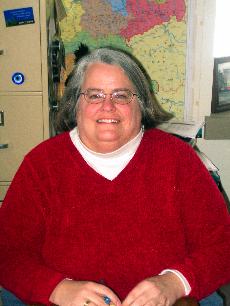Sabbatical leave allows in-depth research, professional growth for faculty members
February 20, 2008
During the next academic year, 11 faculty members will be taking sabbaticals. Eligibility for a sabbatical is determined by how long a tenured faculty member has been at Simpson and how long it has been since any previous sabbatical. Sabbatical leave allows a chance for in-depth research and provides professional growth and development for faculty.
According to Jackie Crawford, chair of the Faculty Personnel Committee, professors are notified well in advance when they are eligible for a sabbatical.
Faculty members submit their applications for sabbatical proposals toward the beginning of each year. Included in the application is the title of the proposal, the nature of the project, how the project will contribute to their professional growth and development and what the benefits of the proposal will be for the college.
Crawford said the FPC then reviews the applications and makes recommendations to the Academic Dean, who then makes recommendations to the President. Ultimately, sabbatical leaves are approved by the Board of Trustees.
According to Crawford, they have been able to award more sabbaticals each year.
“Since Dean Griffith has been here, we have been able to increase the number of sabbaticals we have been able to award each year,” Crawford said. “He sees it as really important for faculty development and has advocated on behalf of the faculty for that.”
Crawford also said that the sabbatical process has become very competitive because there are so many more people applying than there are funds to approve them.
“The administration budgets for so many sabbaticals each year,” Crawford said. “In the past few years we have had far more applicants than we have had spaces for. That is one of the reasons that Dean Griffith has tried so hard to increase the number because there have been a lot of worthy proposals that would have funded and approved if there was enough money to support them.”
Patricia Calkins, associate professor of German, will be taking a sabbatical during the fall 2008 semester.
“It’s going to deal with the first six weeks of the study abroad experience,” Calkins said. “I’m going to be working with developing some teaching modules that include autonomous learning strategies to help students get independent. The Schorndorf group is going to be the pilot group and is going to be able to try it out and see how it works.”
During Calkins’ absence, Carl Pullen, a former German teacher at Indianola, will be hired full time at Simpson. Calkins will still be teaching the one-hour Schorndorf orientation course in Germany during her sabbatical.
John Epperson, professor of political science, will be taking a sabbatical during the spring 2009 semester. His research project focuses on a novice judge in the Supreme Court.
“My study focuses on Samuel Alito, who is the newest justice to the Supreme Court,” Epperson said. “The thrust of what I’m doing is I’m looking at his first two to three years on the Court to sort of get a baseline view of what his decisions are in important cases, what his opinions are like and what direction he seems to be charting for himself.”
Justin Nostrala, associate professor of art, will also be taking a sabbatical during the spring 2009 semester. His project is entitled “Artists Residency for Intensive Artistic Production: Building on the Prayer Drawings.”
“The main purpose is to have the time to work on the concept of drawings that I have been doing for the past several years,” Nostrala said. “I wanted to continue in the mode of drawing that I have been working in and hopefully expand it and see where it’s going to go. That’s the overall objective.”
Nostrala said that the ideal situation would be spending two solid months in an artist colony.
“In addition to working in my own studio, which I have in my house in Indianola, I would like to get a residency at an artist colony,” Nostrala said. “Basically it is having a secluded specific chunk of time and space that is completely devoted to making art.”
“The main thing that I want to do is I often have lots of ideas that I would like to execute,” Nostrala said. “I want to be able to have the time to execute all of these ideas. To make art, you need an extended period of time where you can have one idea and then build on that idea so it needs to be an ongoing process. I want to have that really rich artistic experience where time and space just dissolve in the midst of making art constantly where it completely engulfs you. And the end result will be a body of art.”












